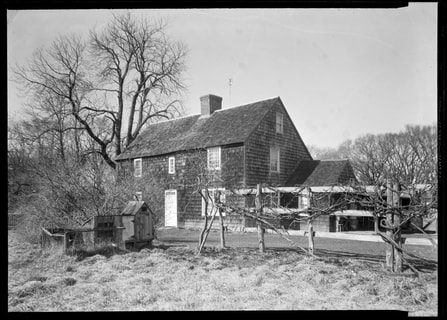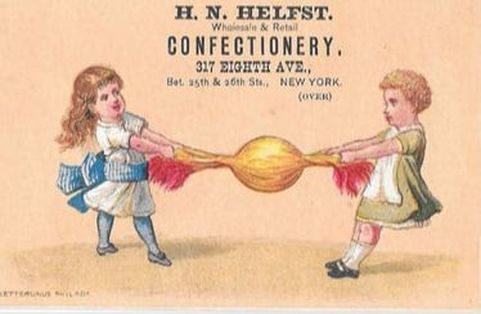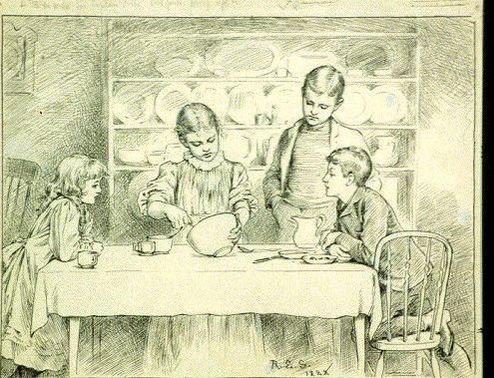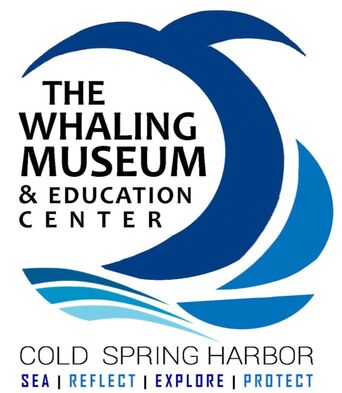 Mulford Farmhouse is one of the oldest in Suffolk County. Mulford Farmhouse is one of the oldest in Suffolk County. Before George Washington, Paul Revere, and Alexander Hamilton, the first – and feistiest! - patriots were none other than Long Island whalers. The first colonists were English Puritans who arrived to the east end in 1640. At the time, the area was considered an extension of Connecticut and New England – seen as remote and separate from the Dutch-ruled western end of Lange Eylant. These pioneers were initially farmers, but they quickly became seasonal entrepreneurs after they noticed their enormous marine neighbors spouting by their shores: blubber-rich Right whales. Whaling companies were launched during the winter months, hunting whales in rowboats on frigid beaches with the labor of local Native Americans. In large iron trypots on the sand, whaling crews stewed blubber until it melted into liquid gold - whale oil. Whale oil was used chiefly for illumination (and later in time, for a variety of manufacturing purposes). Oil even served as a currency; local schoolteachers were paid in whale oil. For the next twenty years, colonists worked to perfect this trade. Whaling quickly became part of community life, with required whale-spotting shifts from able-bodied men. School even let out from December to April so children could help spot and process whales. Oil was shipped to New England rather than New Amsterdam to avoid Dutch taxes. This trade route was suddenly halted when new commerce rules were set in place by England. The entire Long Island was now a part of New York. All goods were to be exported through New York City. The whale was a “royal fish,” from which the crown demanded a twenty to fifty percent tax. East-enders were horrified. The battle between whalers and England began. Whalers were outraged at taxation without representation – foreshadowing the defiant Boston Tea Party a century later. Whalers rebelled by turning Long Island into a smuggler’s haven, avoiding taxes by continuing to ship their oil to Boston or New London. A string of upset New York governors tried to enforce the tax – generally unsuccessfully. When the Duke of York investigated how many whales were caught in the past 6 years – and what his share was – he found no records had been kept. Lord Cornbury, a later New York Governor, whined that “the illegal trade” was still carrying on between Long Island and New England. With colonists’ protests falling on deaf ears, the towns of East Hampton, Southampton, and Southold bypassed the Governor of New York and submitted a petition to the court of England to be made a free corporation or continue under Connecticut rule. Their detailed list of complaints is similar to the tune of complaints in the Declaration of Independence. Their plea was denied. Their solution? Ignore the whale tax anyway. Colonists continued to smuggle the majority of oil to New England. New York merchants themselves were also flouting the law, which required all international trade to go through England. Instead, they traded directly with the West Indies, exchanging whale oil for rum, sugar, and cocoa. Taking international trade into their own hands, New Yorkers who felt particularly courageous loaded up their ships and sailed with their goods to Madagascar, where there was an anarchist colony of none other than – pirates! Doing business with pirates was highly profitable, since it was all tax free. An inspector noted that in 1695, Long Island “was a receptacle for pirates and the people generally a lawless and unruly set.” Whalers continued to protest. One of the pluckiest whalers who objected to the tax was Samuel Mulford of East Hampton, who lived from 1644-1725. He was a bold and somewhat quirky fellow. He championed the cause of the whalers, himself a financially successful owner of a whaling company of 24 men. Elected as a representative to New York Assembly in 1683, he was expelled from the assembly twice for his outspoken demands; colonists simply re-elected him and sent him back. When he sailed to London to protest the whale oil tax, he sewed fishhooks in his pockets to deter pickpockets during his long wait outside Buckingham Palace. Ultimately, the Crown eased taxation. Mulford didn’t get to see this victory, as this announcement came five years after his death. Encouragingly, various acts were passed by the British Parliament to support the lucrative whaling industry, but colonists’ frustrations towards their relationship with England never really went away. During the Revolutionary war, which brought whaling to a standstill, locals repurposed whaleboats for guerilla warfare against British efforts. After American won its independence, a new era opened for whaling. In 1785, the Lucy left Sag Harbor to whale offshore Brazil; she returned with an unprecedented 360 barrels of whale oil. Americans took notice. To encourage trade, George Washington then authorized the first lighthouse in New York State to be built, the Montauk Lighthouse. The hundreds of whaleships that followed the Lucy would have sailed home from their global voyages directed by this lighthouse - illuminated by none other than whale oil. More: Learn about Long Island whaleboats used in the Revolution ► Learn More
2 Comments
By Nomi Dayan, Executive Director As you reach for a sweet treat this June in honor of National Candy Month, consider how the abundance of candy today is a rather exceptional thing. For much of human history, sugar was an expensive indulgence reserved for celebratory desserts. Sugary treats were a luxury for the rich. People also used sugar for therapeutic functions, with early candy serving as a form of medicine, including lozenges for coughs or digestive troubles. Sugar was also used as a preservative; similar to salt, sugar dried fruits and vegetables, preventing spoilage. But all in all, sugar was carefully conserved. In George Washington’s time, the average American consumed only 6 pounds of sugar a year (far less than the 130 or so pounds consumed annually per person today). The use of sugar swelled dramatically in 1800’s. Suddenly, sugar was everywhere, and with it came new technological advances in candy production. Sugar shipped from slave-powered plantations in the West Indies became more affordable and available with new, steam-powered industrial processes. These changes were part of the Industrial Revolution, made possible by prized whale oil and its valuable lubricating properties. In 1830, Louisiana had the largest sugar refinery in the world. The invention of the Mason jar in 1858 drove demand for sugar for canning, and in 1876, the Hawaiian Reciprocity Treaty made sugar even more available. People couldn’t get enough of sweetness. The availability of sugar brought a slew of new inventions to the culinary scene: candy! Confectioneries sprang up everywhere. The shops’ best customers were children, who spent their earnings on penny candy. Hard candies became very popular. As Yankee whaling reached its peak, Victorian-era sweets boomed with a succession of creations: the first chocolate bar was made in 1847; chewing gum followed in 1848; marshmallows were invented in 1850, and in 1880, fudge. People’s breaths were taken away when sweets with soft cream centers were tasted at the Great Exhibition in London in 1851. Some candies, especially hard ones, were sold as being ‘wholesome’ and even healthy. Unfortunately, candy was anything but nourishing. Sugar was sometimes adulterated with cheaper Plaster of Paris or chalk. Other candies were far more toxic. In 1831, Dr, William O’Shaughnessy toured different confectionery shops in London and had a range of dyed candy chemically analyzed; he found a startling number of sweets colored with lead, mercury, arsenic and copper. But as ubiquitous as candy was on land, a sweet treat was quite rare at sea, especially on a whaleship. Sugar on board was a still a luxury reserved for the captain and officers. The crew had to settle for molasses, which was often infested; one whaler wrote it tasted like “tar.” Candy only makes brief glimpses in whaling logbooks, or daily records. On May 22, 1859, William Abbe journaled on the ship Atkins Adams: “Cook & Thompson Steward making molasses candy in galley.” (Earlier on the voyage, he described molasses kegs as “the haunts of the cockroach.”) Laura Jernegan, a young daughter who sailed with her father and family on a three-year whaling voyage, wrote in her diary on board the Roman, “Feb 16, 1871. It is quote pleasant today. The hens have laid 50 eggs…” Then, an exciting thing happened – she passed another whaleship at sea, the Emily Morgan. There was a whaling wife aboard, too! Laura wrote: “Mrs. Dexter [the wife of Captain Benjamin Dexter] sent Prescott [her brother] and I some candy.” In other cultures, whales still facilitated the treat scene – no sugar needed. Frozen whale blubber was (and is) a traditional treat for the Inuit and Chukchi people. Called muktuk, cubes are cut from whale skin and blubber and conventionally are served raw. While whaling in our country is a thing of the past, the years of unrestricted whaling reflect how, in essence, people treated the ocean “like a kid in a candy store,” as noted by author Robert Sullivan. In the 20th century, so many whales were caught so quickly and efficiently that soon even whalers themselves were worried about saving the whales. Today, as we continue to gather resources from the sea, we must ensure the ocean can replenish itself faster than we can sweep its candy off the shelves. Bring Candy History into Your Kitchen
|
WhyFollow the Whaling Museum's ambition to stay current, and meaningful, and connected to contemporary interests. Categories
All
Archives
January 2024
AuthorWritten by staff, volunteers, and trustees of the Museum! |




 RSS Feed
RSS Feed
